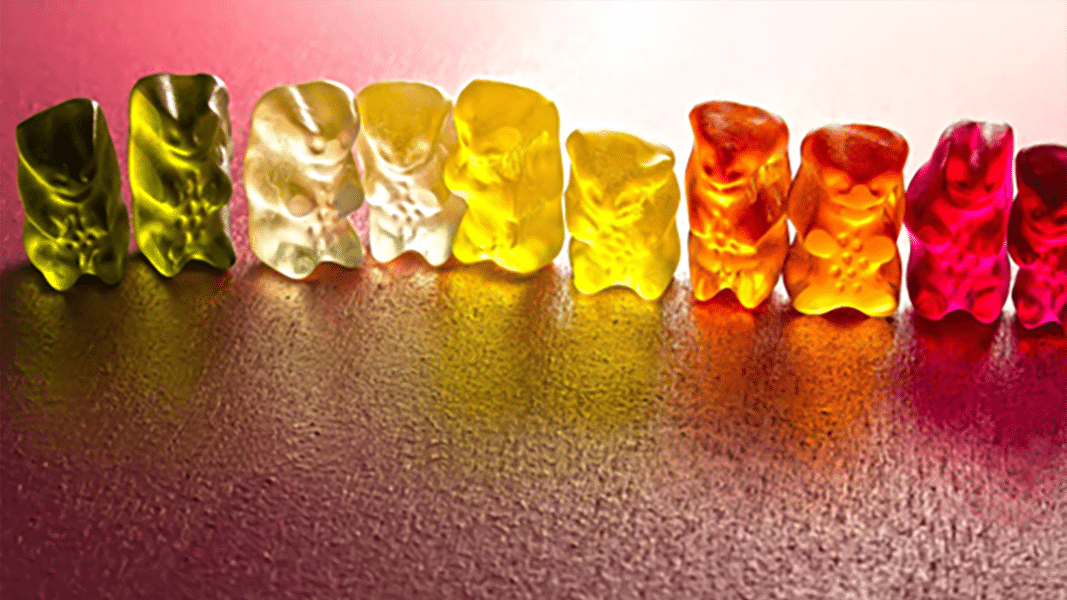The Truth About Hemp: Debunking 7 Common Industry Myths
Hemp vs. Marijuana: A Blurred Line
Table of Contents
- Hemp vs. Marijuana: A Blurred Line
- Unmasking the Hemp Industry’s Misleading Claims
- Fallacy #1: 0.3% THC is Non-Intoxicating
- Fallacy #2: 5 Milligrams of THC per Serving is Non-Intoxicating
- Fallacy #3: Delta-8 THC is Less Potent and Thus Less Dangerous Than Delta-9 THC
- Fallacy #4: THC per Serving Matters; THC per Package Doesn’t
- Making Informed Choices About Hemp Products
- Serving Size Confusion in the World of THC
- The CBD Myth: No Neutralizing Power Over THC
- The Danger of Synthetic Cannabinoids
- The THCA Flower Fallacy
- THCA: A Legal Gray Area
- The Federal Hemp Dilemma
- The Importance of Transparency
- Understanding the Risks
- The Science Behind the Risks
- Protecting Yourself: Informed Choices Matter
- The Future of Delta-8 Regulation
“It’s rope, not dope!” This rallying cry from early hemp advocates aimed to reclaim the plant’s rightful place in American industry. For years, this slogan accurately reflected the distinction between hemp and marijuana. Hemp referred to low-resin, non-intoxicating Cannabis sativa L varieties bred for fiber or seed oil production, while marijuana typically described plants cultivated for their high resin content, prized for medicinal and recreational use.
Today, however, this line has become increasingly blurred. A surge in “hemp” products explicitly marketed for their intoxicating effects has created confusion for consumers and regulators alike. Modern-day “hemp” often resembles marijuana more than rope, raising serious questions about product safety, efficacy, and labeling.
Unmasking the Hemp Industry’s Misleading Claims
Navigating this complex landscape requires separating fact from fiction. Here are seven common industry myths surrounding hemp that need to be addressed:
Fallacy #1: 0.3% THC is Non-Intoxicating
Contrary to popular belief, the 0.3% THC threshold in botanical hemp does not guarantee a non-intoxicating experience, especially when consumed in edibles and beverages. THC is a potent psychoactive compound, measured in milligrams (thousandths of a gram), not grams. A 0.3% threshold can result in surprisingly high THC levels in finished products. For example, a 12-ounce beverage with 0.3% THC could contain over 1,000mg of THC. A single “hemp” gummy might contain 20mg of THC, exceeding the maximum THC per serving allowed (10mg) in regulated California cannabis edibles.
Fallacy #2: 5 Milligrams of THC per Serving is Non-Intoxicating
The U.S. Hemp Roundtable’s 2023 white paper, recommending permissive THC levels in hemp products, falsely claims that 5mg per serving is “below the impairment threshold.” Individual THC sensitivity varies greatly due to genetics, metabolism, tolerance, and other factors. When ingested, delta-9-THC converts into the more potent metabolite 11-Hydroxy-THC in the liver, potentially leading to a stronger high and adverse effects. A 5mg THC gummy can induce intoxication in many individuals, with some experiencing discomfort from even smaller doses.
Fallacy #3: Delta-8 THC is Less Potent and Thus Less Dangerous Than Delta-9 THC
While delta-8 THC, a naturally occurring isomer of delta-9 THC, has lower binding affinity for the CB1 cannabinoid receptor in the brain, resulting in a milder high compared to an equal dose of delta-9 THC, this doesn’t make it harmless. The widespread availability of high doses of delta-8 and other THC variants in unregulated hemp products undermines the claim that delta-8 delivers a milder experience.
Fallacy #4: THC per Serving Matters; THC per Package Doesn’t
Just as a “serving” of potato chips is often defined as ten chips, misleading serving sizes can obscure the total THC content in hemp products. Consumers need to consider the entire package’s THC concentration rather than relying solely on per-serving information.
Making Informed Choices About Hemp Products
The growing popularity of hemp products necessitates a critical approach to understanding their potential effects and risks. By debunking these common myths, consumers can make more informed decisions about incorporating hemp into their lives.
The Truth About Hemp: Debunking Common Misconceptions
Serving Size Confusion in the World of THC
Determining a standard serving size for edibles and drinks infused with THC can be tricky. Unlike traditional food items, where a cup or slice often serves as a clear guide, the world of cannabis products lacks standardized portions. This ambiguity stems from variations in product formulations and consumer interpretations. While manufacturers might list suggested serving sizes, individuals often consume more than intended, leading to unexpected and potentially overwhelming effects. For example, a bag of THC-infused gummies might contain multiple servings, tempting consumers to indulge beyond the recommended amount. This can result in excessive intoxication, especially for those unfamiliar with cannabis or prone to “the munchies.”
The CBD Myth: No Neutralizing Power Over THC
A common misconception is that CBD neutralizes the intoxicating effects of THC, allowing manufacturers to include higher THC levels in products. However, research published in Neuropsychopharmacology (November 2022) debunked this claim. The study, which involved administering various doses of CBD alongside a fixed amount of THC to participants via vaping devices, found no significant reduction in the intoxicating effects of THC regardless of the CBD dosage. In fact, some studies suggest that low doses of CBD might even amplify THC’s psychoactive effects and prolong the duration of the high.
The Danger of Synthetic Cannabinoids
Another fallacy is the belief that synthetic cannabinoids are identical to plant-derived cannabinoids and therefore equally safe. This couldn’t be further from the truth. Products containing synthetic cannabinoids, whether mimicking natural compounds or being entirely novel creations, often harbor toxic solvent residues and other chemical impurities. The synthesis of delta-8 THC (and delta-9 THC) from CBD isolate can also produce numerous “irregular THC isomers” with unknown pharmacological and safety profiles, according to Dr. Mark Scialdone, a leading expert in organic chemistry. Some synthetic cannabinoids are engineered to be significantly more potent and mind-altering than naturally occurring compounds, posing a serious health risk. For instance, THC-O-acetate, a synthetic derivative of THC, has been linked to the production of dangerous ketene gas when heated in vape devices. Ketene gas is highly toxic, even at low concentrations, and was suspected to contribute to the EVALI “vaping crisis” that resulted in numerous deaths and severe lung injuries. Synthetic cannabinoids have also been associated with a range of adverse health effects, including diffuse alveolar hemorrhage, acute respiratory failure, heart attacks, strokes, seizures, and kidney damage.
The THCA Flower Fallacy
Perhaps the most audacious misconception is the claim that THCA-rich flower is legal smokable hemp due to a loophole in the Farm Bill. This argument hinges on the fact that raw cannabis flower contains high concentrations of delta-9 THCA and less than 0.3% delta-9 THC, leading to the dubious assertion that it qualifies as hemp under the Farm Bill (which doesn’t explicitly mention THCA). However, there is no significant difference between marijuana and THCA flower. When heated through smoking, baking, or vaporization, nearly 90% of non-psychoactive THCA converts into delta-9 THC, producing a psychoactive effect indistinguishable from traditional cannabis.
The Complexities of THCA and Hemp Legality
In the ever-evolving world of cannabis, understanding the nuances of different cannabinoids is crucial. One such cannabinoid that often causes confusion is THCA (tetrahydrocannabinolic acid). While THC (tetrahydrocannabinol) is the primary psychoactive compound in marijuana, THCA exists in its acidic form and doesn’t produce a “high” on its own. However, when heated, THCA converts into THC, leading to the familiar psychoactive effects.
THCA: A Legal Gray Area
The legal status of THCA is a complex issue, particularly within the context of hemp regulations. In state-regulated cannabis markets, THCA is consistently included in the definition of THC and factored into the overall THC content calculation. This means that products containing high levels of THCA would be subject to the same regulations as those with high THC concentrations.
The USDA takes a similar stance, classifying hemp with elevated THCA levels as marijuana, which is prohibited under state hemp programs. Hemp regulations are designed to ensure that hemp products comply with federal guidelines and remain within legal limits for THC content.
The Federal Hemp Dilemma
So how can hemp flower with high THCA levels be legally sold at the federal level? This apparent contradiction arises from the 2018 Farm Bill, which legalized hemp containing less than 0.3% delta-9 THC on a dry weight basis. While this legislation doesn’t explicitly address THCA, it has led to a legal gray area where hemp products with high THCA levels can be marketed as compliant if their final THC content (after conversion from THCA) remains below the 0.3% threshold.
This ambiguity has sparked debate and concerns among regulators, consumers, and industry stakeholders about the potential for abuse and the need for clearer guidelines regarding THCA limits in hemp products.
The Importance of Transparency
As consumers navigate this complex landscape, it’s crucial to prioritize transparency from hemp product manufacturers. Look for brands that clearly label their products, including the THCA content, and provide third-party lab testing results to verify the accuracy of these claims. By demanding transparency, consumers can make informed decisions about the hemp products they choose.
For more information on navigating the world of hemp and its various cannabinoids, visit our comprehensive guide to hemp.
The Hidden Dangers of Delta-8 THC: What You Need to Know
Understanding the Risks
Delta-8 THC, a popular alternative to traditional delta-9 THC, has gained significant traction in recent years. While often marketed as a “safer” option due to its lower psychoactive effects, emerging research reveals potential dangers that consumers should be aware of.
A study published in Molecules (2022) by Ray et al. highlights the presence of harmful impurities in many commercially available delta-8 THC products. These impurities can pose serious health risks, including respiratory issues and liver damage. Furthermore, a recent article on TheTrendyType.com (“Expert Gives Delta-8 THC a Thumbs Down”) emphasizes the lack of regulation surrounding delta-8 production, leading to inconsistent potency and potential contamination.
The Science Behind the Risks
Research published in Chemical Analysis in Toxicology (2022) by Munger et al. sheds light on the chemical processes involved when vaping delta-8 THC acetates. The study reveals that these products can produce ketene, a highly reactive and potentially carcinogenic compound. This finding raises serious concerns about the long-term health effects of inhaling delta-8 THC through vaping devices.
The lack of comprehensive safety testing for delta-8 THC further exacerbates these risks. Unlike traditional cannabis products, which are subject to rigorous quality control measures, delta-8 THC often bypasses these regulations. This leaves consumers vulnerable to unknowingly ingesting or inhaling potentially harmful substances.
Protecting Yourself: Informed Choices Matter
Given the potential dangers associated with delta-8 THC, it is crucial for consumers to make informed decisions about their health and well-being.
Choose reputable brands: Opt for products from companies that prioritize transparency and third-party lab testing to ensure product safety and potency.
Read labels carefully: Pay attention to the ingredients list and avoid products containing unknown or potentially harmful additives.
* Start low and go slow: If you choose to use delta-8 THC, begin with a small dose and gradually increase it as needed. Be aware of your body’s response and discontinue use if you experience any adverse effects.
Remember, your health is paramount. Stay informed about the risks associated with delta-8 THC and prioritize safe and responsible consumption practices.
The Future of Delta-8 Regulation
The lack of federal regulation surrounding delta-8 THC has created a legal gray area that needs to be addressed. The 2018 Farm Bill legalized hemp and its derivatives, including delta-8 THC, but it did not explicitly address the production and sale of these products. This ambiguity has led to inconsistencies in state laws and regulations, leaving consumers vulnerable to potentially harmful products.
The federal government is currently considering new legislation to clarify the legal status of delta-8 THC and establish safety standards for its production and distribution. This move could help protect consumers from the risks associated with unregulated products and ensure that the market for delta-8 THC operates safely and transparently.


